Isobel Blackthorn's Blog, page 5
November 6, 2021
The Unlikely Occultist: 0.99 US/UK Kindle 11/6 through 11/10
The Unlikely Occultist will be available for 0.99 as a Kindle purchase in US/UK from November 6 through November 10. You can purchase from Amazon here. You can find out more about this book below.
***** “Blackthorn’s book offers a fascinating portrait of a woman dismissed by mainstream thinkers and religions, a woman whose current obscurity is all the more poignant considering the grandeur of her ambitions and her hopes for a healed world.” – Misty Urban, Historical Novels Society, Issue 88 May 2019
***** “[Isobel Blackthorn] has given us back the idea of Bailey, and the inspiration to re-read her work and re-examine her remarkable ideas…Blackthorn is to be thanked for her scrupulously-researched novel…” – Walter Mason, New Dawn Magazine, July 2019
***** “A very interesting and unusual read!” – Tina for the TripFiction Team, July 2019
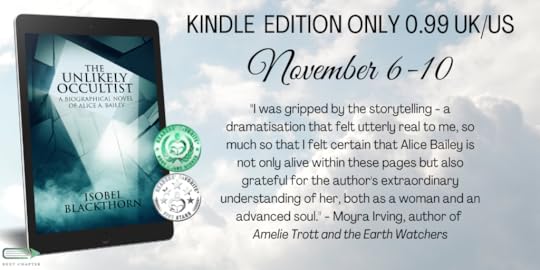 About The Unlikely Occultist: A biographical novel of Alice A. Bailey
About The Unlikely Occultist: A biographical novel of Alice A. BaileyLibrarian Heather Brown discovers the fascinating life of Alice Bailey – a long forgotten occultist.
Back in 1931, Alice is preparing to give a speech at a Swiss summer school. But how can she stave the tide of hatred and greed set to bring the world to its knees?
Soon after, Alice is put on Hitler’s blacklist. What she doesn’t realize is the enormity of her influence to the world, and the real enemies who are much closer than she thinks.
A dynamic and complex figure, Alice Bailey’s reach was huge. She was influential among people and organizations of global power, especially the United Nations, and is widely regarded as the Mother of the New Age.
Yet today she is maligned by fundamentalist Christians, Theosophists, Jews, academics and above all, by conspiracy theorists. Are any of these groups justified in rejecting the unlikely occultist?
November 3, 2021
The Cabin Sessions: 0.99 US/UK Kindle 11/3 through 11/9
The Cabin Sessions will be available for 0.99 as a Kindle purchase in US/UK from November 3 through November 9. You can purchase from Amazon here. You can find out more about this book below.
***** “I was gripped in horrified fascination by Blackthorn’s subtle story.” – Zoe, Audible
***** “The author creates a story and unfold it bit by bit while painting a picture that comes alive as you watch. This type of writing is so much more precise and artistic than many of today’s author’s who put out garbage that somehow becomes best sellers.” – Paul Estrada
***** “Enticing and intriguing and entertaining.” – Eddie Generous
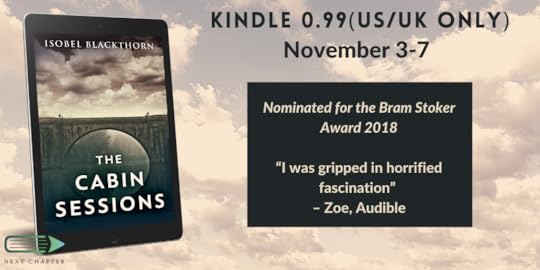 About The Cabin Sessions
About The Cabin SessionsThe Cabin Sessions brims with psychology and atmosphere.
A storm is rolling into the narrow mountain pass when hapless musician Adam Banks stands on the bridge over the river that cleaves the remote village of Burton. The night is already blighted by an astrological omen, and Adam thinks of turning back. Instead, struggling against rising panic, he resolves to fulfill his obligation to perform the guest spot at The Cabin Sessions. He cannot let down his mentor, Benny Muir.
But bad news awaits him. And at least one fellow musician he would rather not meet.
Told from third person viewpoints of Adam and Philip, the town’s plumber, the evening is mapped out in slow eerie detail – that at once manages to evoke Burton’s fanatical cult history while also acting as a harbinger of the disaster to come. In between these two male viewpoints, is the delicate first-person voice of Eva, the breath holder, whose recollections shed an unsettling light on the characters in The Cabin.
Read an Excerpt hereOctober 28, 2021
The Legacy of Old Gran Parks: .99 Kindle 10/28 through 11/01
The Legacy of Old Gran Parks will be available for .99 as a Kindle purchase from October 28 through November 01. You can purchase from Amazon here. You can find out more about this book below.
***** “Just buy it. It’s brilliant.”
***** “Blackthorn’s writing style flows like a river in a barren land. Unobstructed. Understated. Unequalled.”
***** ” If you are a fan of Tarantino movies, you are more than likely going to enjoy this”
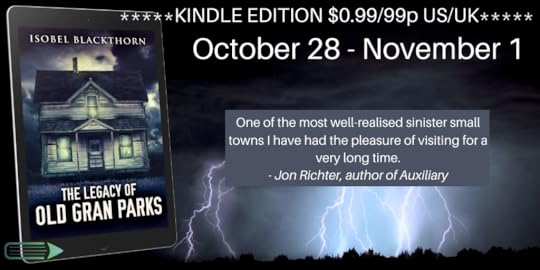 About The Legacy of Old Gran Parks
About The Legacy of Old Gran ParksSouthern Australia, 1983. While Middle-aged stalwart Miriam rolls into town in her broken down car, Frankie – a deer hunter – is up in the forested hinterland with her gun.
Meanwhile, fisherwoman Old Pearl sits on her front deck with her dog, a glass of whiskey in her hand, and Emily, the English backpacker, scrubs out the pie-encrusted kitchen at the roadhouse.
But all is not well.
Gran Parks is stirring.
Four troubled women. One restless spirit.
Who will survive?
The Legacy of Old Gran Parks
Read an excerpt here. https://www.nextchapter.pub/books/the-legacy-of-old-gran-parks
October 24, 2021
New Release set in Canary Islands – Sing Like a Canary
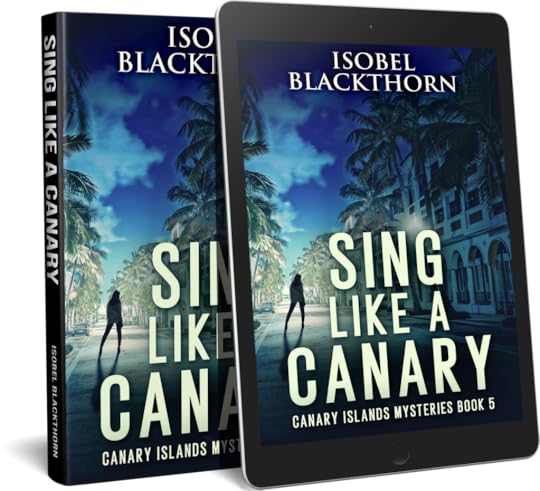 I’m thrilled to announce the release of Sing Like a Canary (Canary Islands Mysteries Book 5)
I’m thrilled to announce the release of Sing Like a Canary (Canary Islands Mysteries Book 5)This book is very special as it is loosely based on experiences my mum had during her time in a police crime squad that nailed a notorious London gang in the 1970s.
Here’s the blurb:
Retired police officer Marjorie Pierce is on her way to Lanzarote to track down her old informer, Billy McKenzie. Billy ended Marjorie’s career, and she needs an explanation; an apology.
Present and past soon collide when gangsters Eric and Mick Maloney turn up on the island with revenge in their veins, and Marjorie has to race against the clock to get to Billy before the brothers.
But who is complicit and who can be trusted… and who really betrayed Marjorie all those years ago?
A multi-layered mystery packed with suspense, Sing Like A Canary is the fifth book in Isobel Blackthorn’s Canary Islands Mysteries Series, and can be enjoyed as a standalone even if you haven’t read other books in the series.
Here’s a taste:
You can find details of the other books in this award-winning series here https://isobelblackthorn.com/canary-islands-novels/
October 12, 2021
On La Palma, the Cumbre Viejo Volcanic Eruption and Bananas
I’ve been following the volcanic eruption on La Palma from the get go, having already heard about the earthquakes they were having. I’ve been on Google Maps exploring the area now under the lava. I’ve read articles mostly from Spanish news sites and seen the footage posted on Twitter and YouTube. Footage of lava racing down flanks of the Cumbre Vieja ridge. Footage of houses being consumed by a wall of lava as it pushes onwards on its inexorable journey to the sea. Fat tongues of lava fanning out, crushing and burying banana plantations and vineyards. Roads and infrastructure, gone. Schools, churches, everything gone. Whole villages gone. And new land being created on the coast.
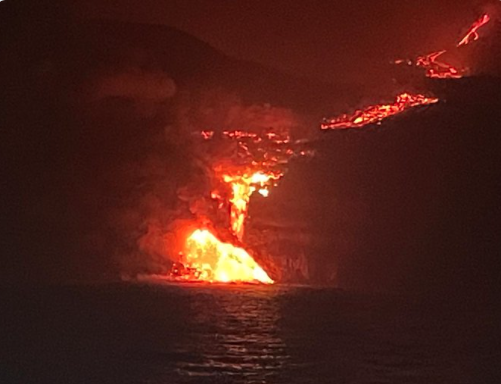
As the author of many novels set on the islands, I felt I had to write something about this at once magnificent and catastrophic event, but it’s been hard to come up with anything fresh considering the widespread news coverage. So I thought I would write a little about what matters most to me and possibly to the citizens of La Palma: bananas.
I’ve never been to La Palma, but the Canary Islands are connected to each and to have lived on one – Lanzarote in my case – is to have an awareness of them all. And as a writer, I have researched what it is like to experience major volcanic events. Not only the lava, but the explosions sending spumes of ash skyward to fall like rain far and wide, the constant roar, the toxic gases. The fear and fascination, and then the loss of livelihoods and most if not all possessions.
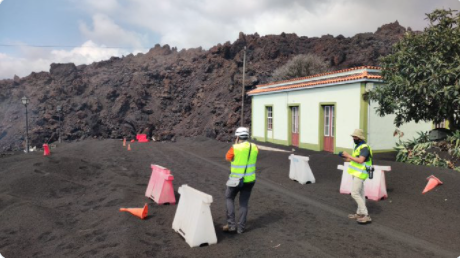
What impressed me when I was researching and what impresses me now is the tenacity of the Canary Islands’ people. The way that since first arrival they have clung on in these inhospitable if dramatically beautiful places and found ways to exist. Five of the islands – Gran Canaria, Tenerife, La Gomera, El Hierro and La Palma – are the tips of enormous volcanoes poking out above the sea. Beaches are few, flat land scarce, and towering cliffs and ravines many. Although the climate, by anyone’s standards, is near perfection.
Before modern development, if you were to live on the islands, you would have needed to fish and farm. Farming meant taking advantage of what little rain was to be had, especially on Lanzarote and Fuerteventura. It meant finding where the soil was good and the aspect right, often terracing the steep slopes. It meant cultivating land right to the edge of precipitous cliffs and ravines. No one with a fear of heights (like me) would have coped. The ingenuity of Canary Island farmers is impressive. As is their tenacity.
 Taken from Google Maps. Highest elevation 2,423 metres
Taken from Google Maps. Highest elevation 2,423 metresOn La Palma, when locals realised about seventy years ago that the west coast offered the perfect climate conditions for growing bananas, they trucked in top soil, set up extensive irrigation systems and started planting. At some point, tunnels were blasted through the little island’s mountainous centre to connect east and west, making it easier to transport the crop to the port. All along the little bit of cultivatable land right beside the sea, banana plantations sit cheek by jowl. Bananas form a vital part of the La Palma economy. About 60,000 bananas are exported each year and the industry is run as an agricultural collective overseeing every aspect from growing and harvesting to packing and shipping.
The more the lava of this current eruption fans out, the greater the damage to these plantations. There is so little suitable land along the west coast that there may be no starting over for those plantation owners who have lost everything. This is what has struck me the most and why I feel deeply for the people caught up in this.
 Farmers collect bananas from their farms full of ash from the erupting volcano on La Palma ANDRÉS GUTIÉRREZ (eldia.es)
Farmers collect bananas from their farms full of ash from the erupting volcano on La Palma ANDRÉS GUTIÉRREZ (eldia.es)I wonder if the tourists now flocking to watch this eruption care much about the destruction of homes and livelihoods. Or if they are just there for the fascination. Maybe even peeling a banana!
October 10, 2021
Some Alice Bailey Genealogy used for her Biography
I was going through a pile of old papers this morning and came across some documents I thought worth sharing. These documents concern theosophist Alice A. Bailey, born Alice Ann La Trobe-Bateman (1880-1949).
 Alice Bailey at Ascona 1932. Photo courtesy Rose Bates (www.alicebaileyarchives.com), edited and colourised by Steven Chernikeeff
Alice Bailey at Ascona 1932. Photo courtesy Rose Bates (www.alicebaileyarchives.com), edited and colourised by Steven ChernikeeffResearching Alice Bailey’s genealogy proved straightforward when it came to her father’s line as the aristocratic La Trobe-Bateman family were high-achieving with a number of notable figures including first lieutenant-governor of Victoria, Australia, Charles La Trobe, and renowned water engineer John Frederic La Trobe-Bateman.
When it came to Alice Bailey’s mother’s line, things were more challenging, but a subscription to Ancestry helped. I ordered Alice Bailey’s birth certificate and her mother’s birth and marriage certificates from the General Register Office, London, UK, just to make absolutely certain that my research was accurate.


I also ordered Alice Bailey’s parent’s marriage certificate.
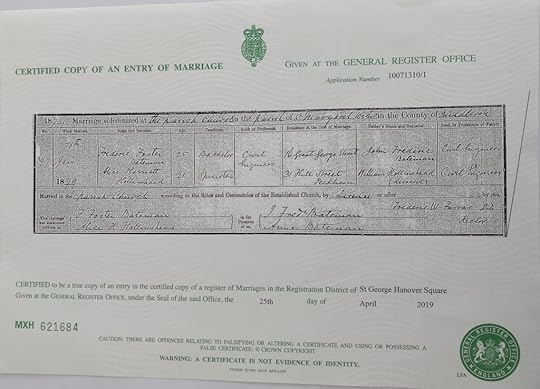
With this information, I started searching through the Census records. And I came up with a sketch of Alice Bailey’s mother’s family. They belonged to the respectable middle class. I thought I would share my rough sketch in the raw with all of the crossings out and a few thoughts. It’s messy, but that’s research. I used this to inform the first chapter in Alice A. Bailey: Life and Legacy.

I pored over all these documents, as I did all the research material I used to compose the biography. For me, it was a once in a lifetime undertaking and I am very pleased I took the trouble to do it. If Alice Bailey is of interest to you, I hope you are drawn in by these documents as I was.
September 1, 2021
Alice Bailey biographical novel wins book award!
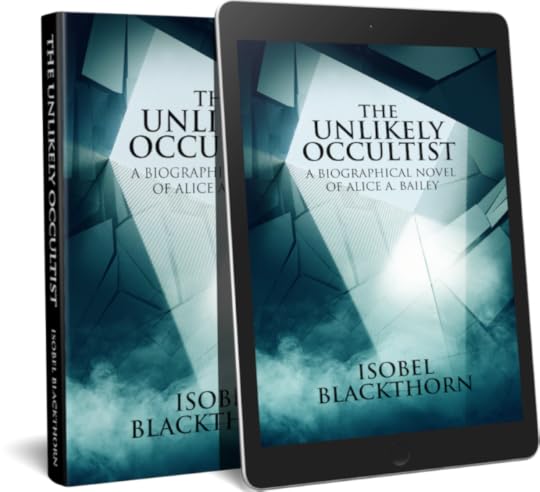
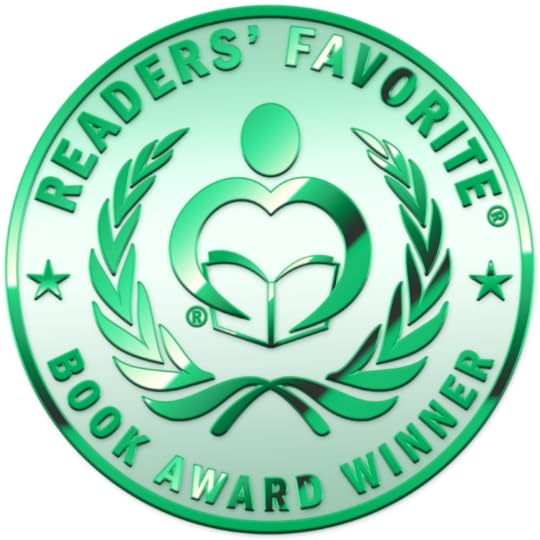 I’m thrilled to announce that The Unlikely Occultist has won the Honorable Mention Award in the Realistic Fiction category of the 2021 Readers’ Favorite Book Awards.
I’m thrilled to announce that The Unlikely Occultist has won the Honorable Mention Award in the Realistic Fiction category of the 2021 Readers’ Favorite Book Awards.
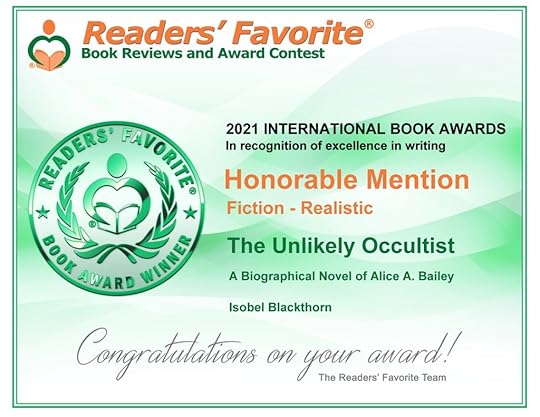 Reviewed By Deborah Lloyd for Readers’ Favorite:
Reviewed By Deborah Lloyd for Readers’ Favorite:Shortly after her loving Aunt Hilary’s funeral, Heather faced a challenge at her job. At the State Library in Victoria, Australia, she was assigned the task of assessing a one-hundred box collection donated by the late Professor Foyle. She was a professor of religious studies, with a strong interest in Alternative Spiritualities, often called New Age. Heather soon became engrossed in the professor’s writings, and how her own belief system was affected by the study of this collection is a fascinating aspect of this book. Author Isobel Blackthorn has crafted a thought-provoking, insightful book in The Unlikely Occultist: A Biographical Novel of Alice A. Bailey. The journey of Alice is told in a chronological format, including both her personal life and her work in the spiritual realm.
This biographical novel is written in an easy-to-read, flowing manner. It describes the facts of Alice Bailey’s life – the early years of strong Christian beliefs; her commitment to service; the expansion of her spiritual beliefs; the telepathic connection with several Masters; her marriages and mothering three daughters. It also includes how some spiritualists accepted and others vilified her prolific writings and presentations. How Isobel Blackthorn interweaves the life of Alice of the last century and the life of Heather at the present time is truly masterful. This book provides a context for anyone interested in Alice’s teachings and books, the Arcane School, or organizations she or her followers founded. A novel based on historical facts, The Unlikely Occultist is truly an exceptional read.
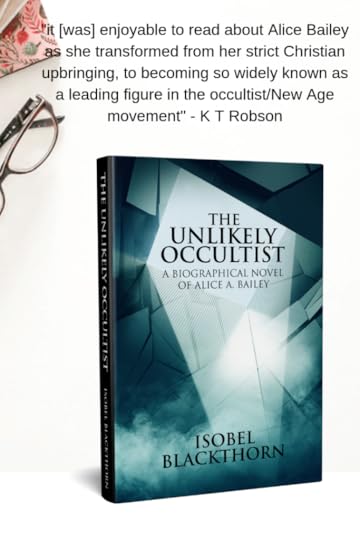
June 18, 2021
A Prison in the Sun Finalist-Winner in the 2021 International Book Awards
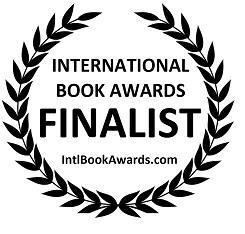
 Book 3 of my Canary Islands Mysteries Series Wins Finalist Award in the 2021 International Book Awards
Book 3 of my Canary Islands Mysteries Series Wins Finalist Award in the 2021 International Book AwardsI’m thrilled to announce this latest award for A Prison in the Sun! The novel has already won the Finalist Award in the 2020 Readers’ Favorite Awards. I guess that means it’s a multi-award winner!
I wrote A Prison in the Sun to introduce the English-speaking world to a little-known atrocity that occurred in Fuerteventura, Canary Islands, Spain – a small farm prison on a former military base used to incarcerate gay men in the 1950s and 60s using a tweak to the vagrancy act. There were other prisons used for the same purpose dotted throughout Spain. My understanding is the one in Fuerteventura was about the worst.
The ‘hostel’ as it was known, comprised three small concrete-block huts each housing about twelve men in the most appalling conditions. (The prison itself pre-dates the incarceration of gay men and included criminals and political prisoners used as slave labour, almost chain-gang style, in farm work and road building in blistering desert conditions.) The prison and the treatment of the gay men who were sent there for ‘reconditioning’ was a travesty.
Even today, after the true and horrible story broke in the Canary Islands and mainland Spain around ten years ago, few know about this prison camp, which is likened to a concentration camp. There is a memorial, but it is situated inside the compound of what is now a youth hostel, tucked out of view of anyone who happens by, which would not be many since the place is not signposted and the area is remote. It remains the island’s dark secret.
I am a strong believer in using fiction to raise awareness. I have known about the prison since 1988 when I was living in Lanzarote and my local friends told me about it. One even drove by it and pointed it out to me.
Fast forward to 2017 and the prison came to light again when I came close to buying a farmhouse nearby in one of my attempts at relocation. That was when I decided I had to incorporate the truth into a novel. It was no easy thing. All the information about the prison was in Spanish and all the historical background was as well. I read countless articles and blog posts, along with a couple of PhD’s, a novella and an academic book, all in a language I have a modest grasp of. The novella was the hardest to translate but I gave it my best effort.
I’m over the moon that all that effort has been appreciated by the judges of these awards.

You can find out more about A Prison in the Sun here – Award-Winning Finalist in the Fiction: LGBTQ category of the 2021 International Book Awards
June 15, 2021
Borders Open Borders Shut: When Will I Ever Get Back to the Canary Islands?
I live in Victoria, Australia. Covid 19 cases are few but we don’t want any. We take a very hard line. Australia has become a gilded cage and there’s no sign of the cage opening any time soon. Hopes for travel by Christmas 2022 could be pie in the sky. We’re very lucky and the envy of the world, but the restrictions only serve to make my wanderlust more intense. I don’t do prisons. But what to do? Life goes on. You just have to make the best of things. And I’ve had my first dose of the AstraZeneca shot which puts me a small step closer to my travel goal.
I’m sitting here at my brand new desk enjoying the comforts of my brand new office chair. I bought it last month in Canary yellow! Could be the start of some very sunny home decor. And of course I write at this desk every day and I’m back in Fuerteventura and Lanzarote in my mind.

A field of maize in Maguez, Lanzarote, taken by me.
When I lived in Lanzarote, the old road north to Arrieta went through Guatiza and Mala. There were sealed roads but hardly ever any traffic. The north was remote and empty. The further north you went, the emptier it got. When I went back in 2016, I was awash with the same feelings I felt back in the 1980s, only this time the island was busy end to end and you couldn’t go anywhere without seeing someone. I would have enjoyed being there during Covid as it would have been for me a reprieve from all that bustle. Selfish, I know.
I like to imagine what the islands were like before the tourist invasion. We live in a much more homogenous world today and it’s a huge stretch of the imagination to conjure a life of simple farming in this brutal if stunning landscape. And what of all the other jobs people did? There would have been fishermen and doctors and teachers and priests. Tailors and shop keepers and those working in the mills. Writers and journalists. Police and a judge. And a wealthy tier of Spanish landowners. What would a day-to-day life have felt like? What would we all be thinking about? What are the stories locked away in the stones of the old houses? What of the old people there now, people born in the 1930s and 1940s, what do they recall of their parents and grandparents? I have a hunger to know. I can only hope someone is making an effort to capture some of those stories before they are lost forever.
Back in the early 1880s, travel writer Olivia Stone wrote of Guatiza:
The village is situated on a flat plain between hills…It was here we saw for the first time extraordinary cone-shaped stacks, twelve to twenty feet in height, in the hollow centre of which grain was stored. The top of which is removed each year to admit the grain, was here of red clay, which dries to a lighter colour, and looks like a monk’s shaven head…The road is a wide path between broad, low walls of grey pumice stones, and winds in and out and round the farms and farmhouses like a maze, for one frequently turns to the left in order to reach one’s destination on the right. Cochineal is the chief product, and everywhere the ugly cactus rises amid the dry, bare lava. The fields are simply composed of black cinders. What a burning, smothering furnace this place must be in summer, when even today the winter sun feels strong!
Olivia M. Stone Tenerife and its Six Satellites Vol II, pp 271-2.

I couldn’t find a photo of grain stacks on Lanzarote. The above image is taken from Stone’s book and depicts the grain stacks in La Oliva, Fuerteventura. (p 346)
Olivia Stone and her husband had many guides. Theirs were of the wealthier set. The Stones didn’t get down among the people. They observed from the elevated height of a camel back and were entertained by local dignitaries. That is not to detract from the valuable insights Olivia Stone has provided the English-speaking world into the Canary Islands of the late nineteenth century.
I was privileged back in February 2020 to have met with many friends who drove me all over the island of the Majoreros, including renowned Majorero artist and photographer JF Olivares. I suppose I got to feel a little bit like Olivia Stone because I, too, was visiting with a special purpose. To write about the islands.
Travelling from Lanzarote to Fuerteventura, I am always struck by the differences, the black cinders and the vast amount of lava on Lanzarote, and the majesty of the bare mountain ranges of Fuerteventura.

photo by JF Olivares
For me, this photo could just as well be a painting. Mountains beneath milky skies.
I’m so grateful to be able to include these images in my posts. Of course, no photo can replace being there. You can’t feel that uplift; the landscape can’t take your breath away. You can’t feel that wind!
The prevailing wind where I live comes off the cold Southern Ocean, sometimes all the way from Antarctica. It’s probably the cleanest air in the world. And when I head down to the coast and take in the heaving ocean, I am transported halfway around the world to my special place.
Maybe one day I’ll see you there. Keep well!
May 27, 2021
The Ash Museum by Rebecca Smith
 About The Ash Museum
About The Ash MuseumThrough ten decades and across three continents, The Ash Museum is an intergenerational story of loss, migration and the search for somewhere to feel at home.
1944. The Battle of Kohima. James Ash dies leaving behind two families: his ‘wife’ Josmi and two children, Jay and Molly, and his parents and sister in England who know nothing about his Indian family.
2012. Emmie is raising her own daughter, Jasmine, in a world she wants to be very different from the racist England of her childhood. Her father, Jay, doesn’t even have a photograph of the mother he lost and still refuses to discuss his life in India. Emmie finds comfort in the local museum – a treasure trove of another family’s stories and artefacts.
Little does Emmie know that with each generation, her own story holds secrets and fascinations that she could only dream of.
 My Thoughts
My ThoughtsI was delighted to review The Ash Museum as part of this publisher book tour. Smith has penned an enthralling and elegantly written tale of intergenerational loss. The novel follows the current fashion for disjointed non-linear narratives, novels that make the reader work that little bit harder to follow the story. It takes skill to pull off this technique. Rebecca Smith has that skill.
While it may not have been the intention of the author to compose a YA novel, that is how it came across to me. Somehow, as I was reading I could picture myself in my old high school classroom, discussing the various interwoven threads of the tale. I wrote a detailed review for Trip Fiction. Here’s a taste:
Beautifully conceived and plainly told in a soft and gentle style, The Ash Museum tells the story of nine-year-old Emmie’s quest to discover what happened to her father and his birth parents in India. The opening chapters are set in the 1970s somewhere in Sussex, and depict the casual prejudices and embarrassing ignorance of the times with gentle irony as young Emmie’s father Jay Ash is roped into helping organise the local fête.
https://www.tripfiction.com/ya-novel-set-in-england-and-india/
Visit the Trip Fiction website to read my full review. (link in the quote above) With warm thanks to Legend Press for the opportunity to be a part of this tour.



